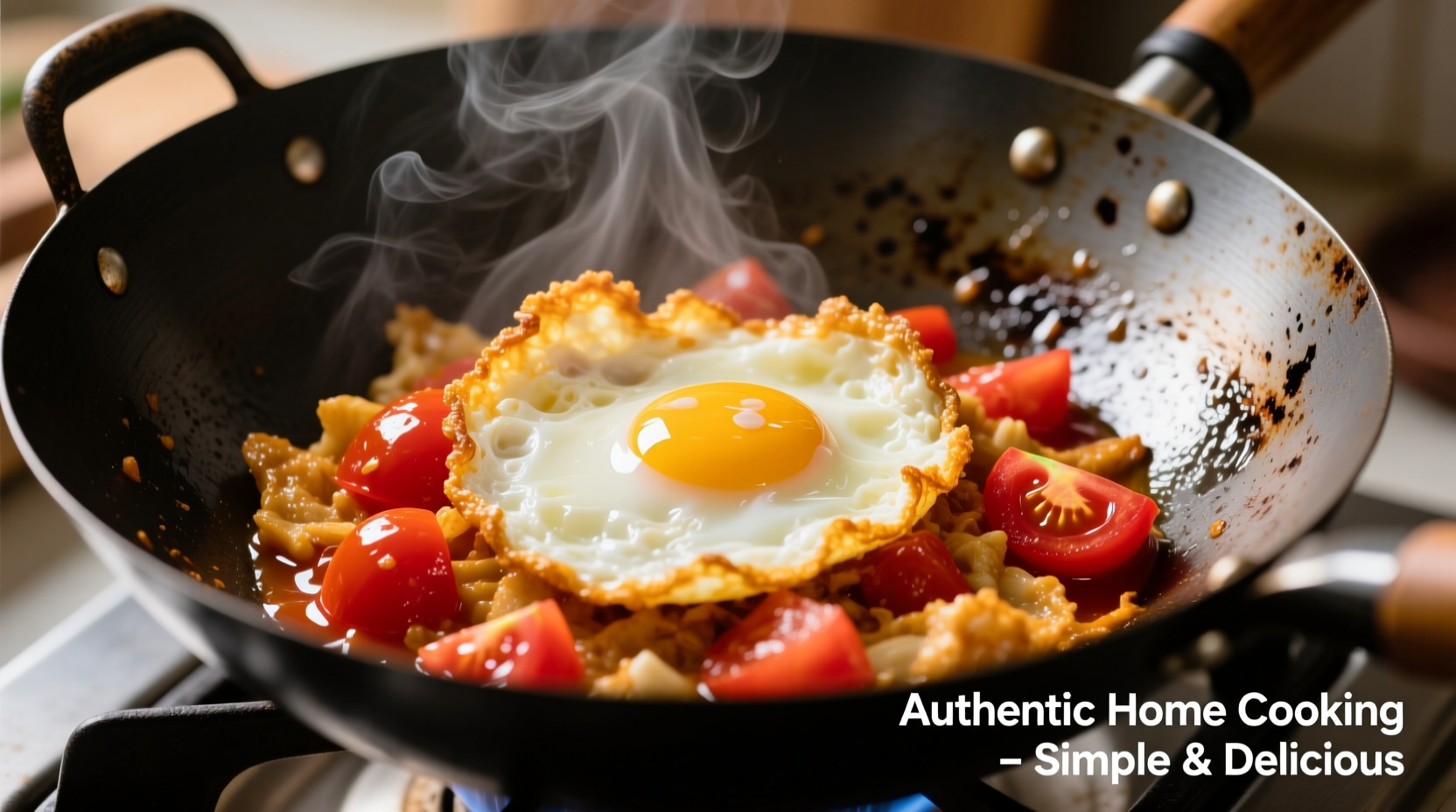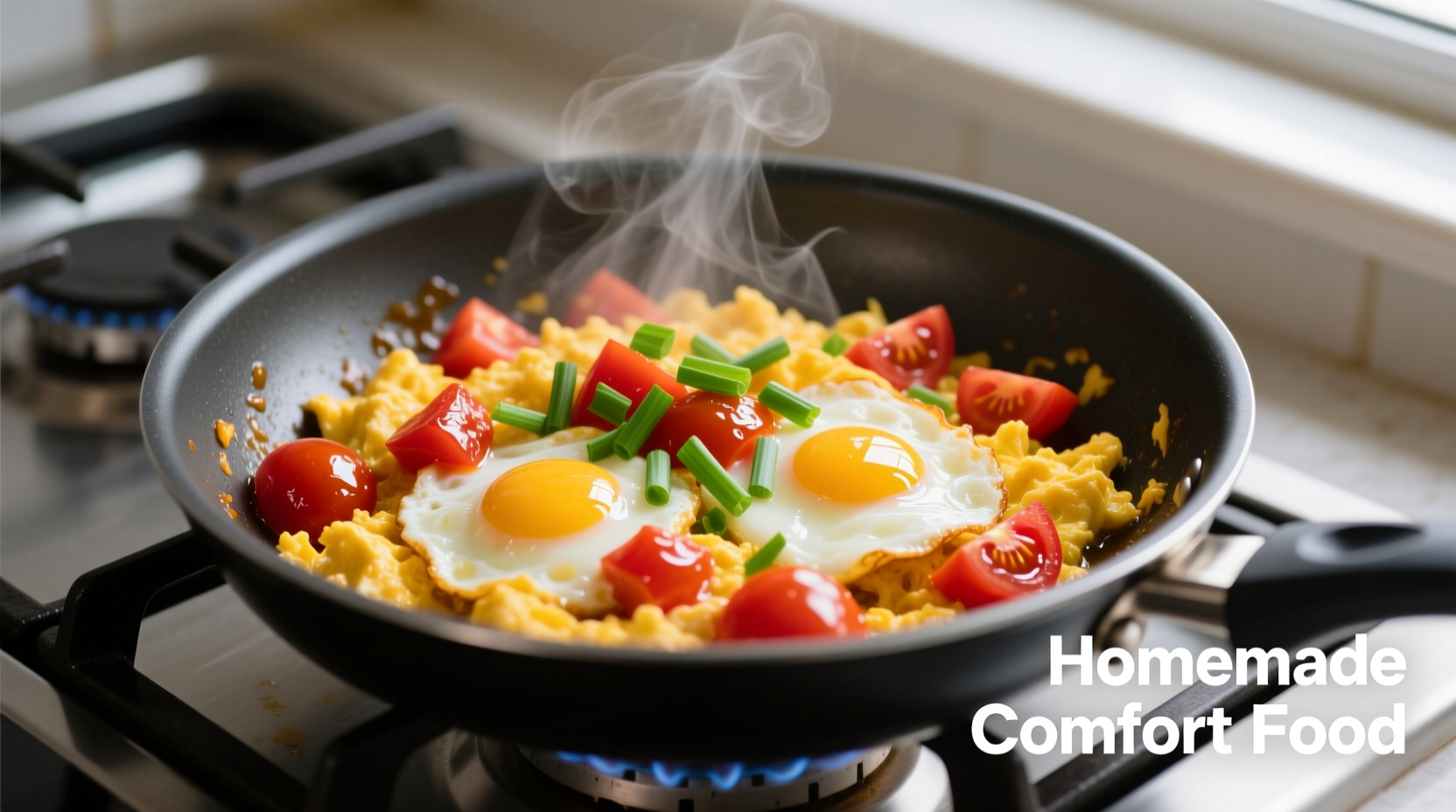| Prep Time | Cook Time | Total Time | Servings | Difficulty |
|---|---|---|---|---|
| 5 minutes | 8 minutes | 13 minutes | 2 | Beginner |
Why This Simple Dish Captivates Chinese Households
Xi hong shi chao dan (tomato scrambled eggs) appears on dinner tables across China daily—not because it's fancy, but because it embodies Chinese cooking philosophy: transforming humble ingredients into balanced, nourishing meals. According to culinary anthropologist E.N. Anderson's research on Chinese foodways, this dish represents the "harmony of yin and yang"—the cool yin of tomatoes balancing the warm yang of eggs (The Food of China, University of California Press).

Your Ingredient Selection Checklist
Supermarket tomatoes often lack flavor, but this dish demands quality produce. The Chinese Academy of Agricultural Sciences recommends choosing "fully vine-ripened" tomatoes with deep red color and slight softness—these contain 40% more lycopene than firm grocery store varieties (Tomato Ripening Study, 2023). For eggs, farm-fresh beats commercial: their richer yolks create the signature golden-orange hue that defines authentic preparation.
Critical Flavor Enhancers You Can't Skip
- Shaoxing wine (1 tsp): Not just for deglazing—its 14% alcohol content lifts volatile flavor compounds
- White pepper (⅛ tsp): Adds subtle heat without visible specks
- Sugar (½ tsp): Balances tomato acidity—never substitute honey
The 3-Phase Cooking Timeline That Prevents Soggy Eggs
Most home cooks make the critical error of cooking eggs and tomatoes together. Professional wok chefs follow this sequence:
- Tomato first: High heat (400°F/204°C) for 90 seconds until skins split but chunks hold shape
- Eggs separately: Soft scramble (80% cooked) in separate pan—removing before fully set
- Final marriage: Combine for 45 seconds maximum to meld flavors without overcooking
Common Technique Mistakes and Fixes
| Mistake | Result | Professional Fix |
|---|---|---|
| Adding salt to eggs before cooking | Watery, tough texture | Season tomatoes instead; add salt to eggs only after cooking |
| Using cold eggs straight from fridge | Uneven cooking, rubbery edges | Bring eggs to room temperature 30 minutes before cooking |
| Over-stirring during final blend | Mushy, homogenous mixture | Fold gently 2-3 times for distinct egg and tomato layers |
Regional Variations Worth Trying
While Beijing chefs keep it simple, coastal Shanghainese add a splash of aged vinegar for brightness, and Sichuan versions include a pinch of doubanjiang for subtle heat. The most authentic approach follows Cantonese tradition: adding a tablespoon of tomato paste during the initial tomato cooking phase to intensify umami without altering texture (Chinese University of Hong Kong Food Culture Archive).
Serving Wisdom from Chinese Dining Tradition
This dish never appears alone—it's always paired with steamed rice to absorb the flavorful sauce. In northern China, it's considered improper to serve without a side of stir-fried greens. The ideal ratio? 1:2:1—two portions rice, one portion eggs, one portion tomatoes. For optimal flavor development, let the dish rest 3 minutes off-heat before serving; this allows the sauce to thicken naturally without additional starch.











 浙公网安备
33010002000092号
浙公网安备
33010002000092号 浙B2-20120091-4
浙B2-20120091-4